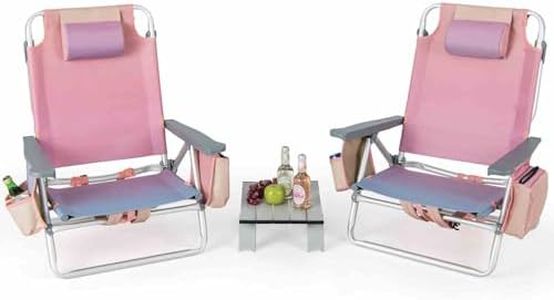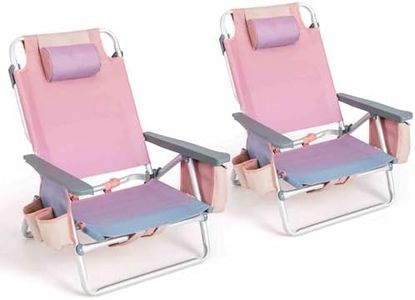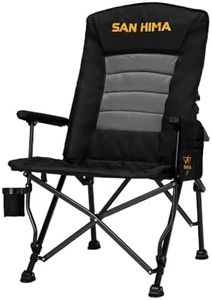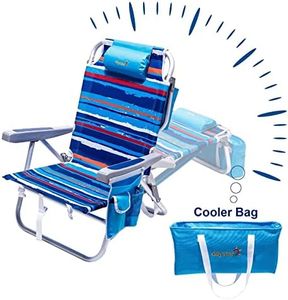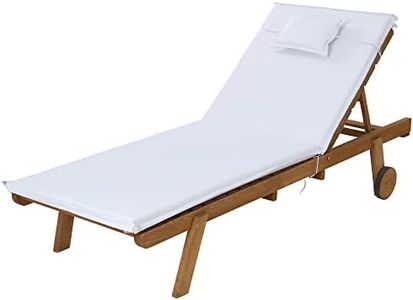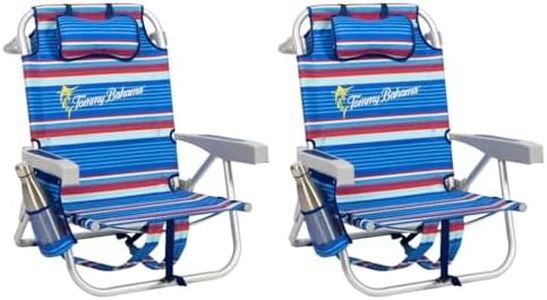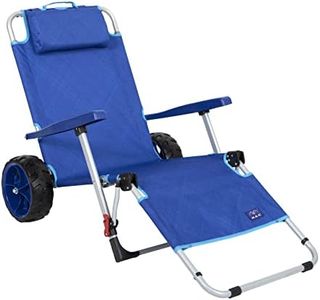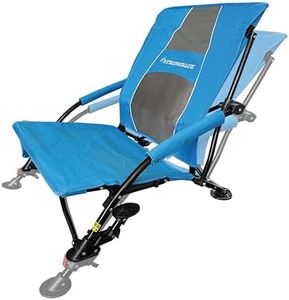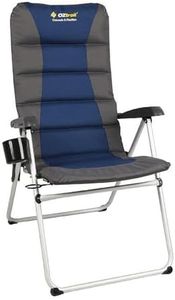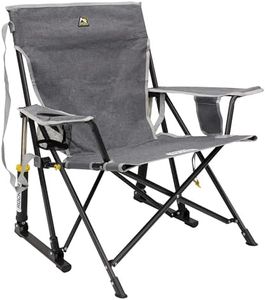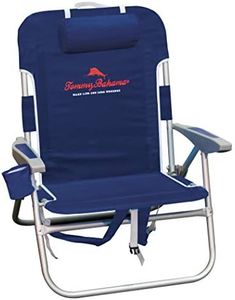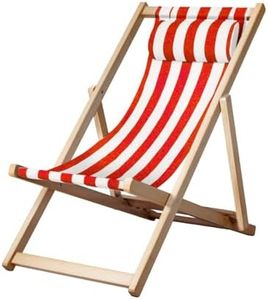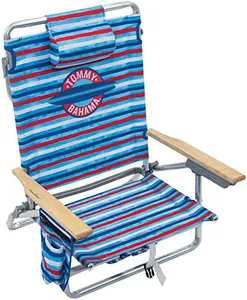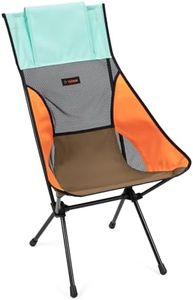We Use CookiesWe use cookies to enhance the security, performance,
functionality and for analytical and promotional activities. By continuing to browse this site you
are agreeing to our privacy policy
10 Best Beach Chairs For Bad Backs
From leading brands and best sellers available on the web.By clicking on a link to a third party's website, log data is shared with that third party.
Buying Guide for the Best Beach Chairs For Bad Backs
Choosing the right beach chair when you have a bad back can make a huge difference in your comfort and enjoyment during outings. A good chair should offer proper support, help you maintain a healthy posture, and be easy to get in and out of. When shopping for a beach chair, it's important to focus on the support features, adjustability, and overall ease of use to ensure that it suits your individual needs and helps you avoid discomfort.Lumbar SupportLumbar support refers to the design and features of the chair that specifically support the lower back. This is very important for people with back problems, as it helps minimize strain and discomfort. Chairs can have built-in lumbar cushions, adjustable lumbar support, or a contoured backrest that naturally fits the curve of your spine. Look for beach chairs with noticeable lumbar support if you have ongoing back pain, as simple flat-backed chairs may not give the necessary comfort.
Adjustable ReclineThis spec refers to the ability to change the angle of the chair's backrest. For those with back issues, being able to adjust the recline can help you find the most comfortable and supportive position. Some chairs have only a couple of fixed recline settings, while others offer a broader range or even infinite adjustments. If you like to change positions or need to find an exact angle that relieves your pain, prioritize chairs with multiple or fully adjustable reclining options.
Seat HeightSeat height is the distance from the ground to the top of the seat. This matters a lot for people with bad backs because too low a chair can make getting up and sitting down difficult and painful. Beach chairs typically range from very low (close to the sand) to higher seats (like standard chairs). If you have trouble with mobility or back pain, consider a chair with a seat height of at least 12–16 inches, as this will be easier to use.
Seat and Back PaddingThis specification is about how much cushioning there is in the seat and backrest. Extra padding can provide more comfort and help limit pressure on your spine and hips. However, too much soft padding can sometimes cause slouching, so look for chairs with firm, supportive padding. If you plan to use the chair for extended periods, more padding will typically be beneficial.
Backrest HeightBackrest height determines how much of your spine is supported. Higher backrests can support your whole back, neck, and even your head, which is critical for those with upper back or neck issues. Shorter chairs, common among some beach models, support only the lower back. Your best choice depends on whether your pain is centralized in your lower back or also affects your upper back and neck; go for higher backrests if you need additional support in those areas.
Ease of PortabilityThis refers to how easy it is to carry and move the chair. Lightweight materials, handles, shoulder straps, and foldable designs affect how convenient a chair is to transport, particularly important if you have back issues and want to avoid heavy lifting or awkward carrying. If you have difficulty carrying things, pay attention to the weight of the chair and look for features like backpack straps or wheels.
